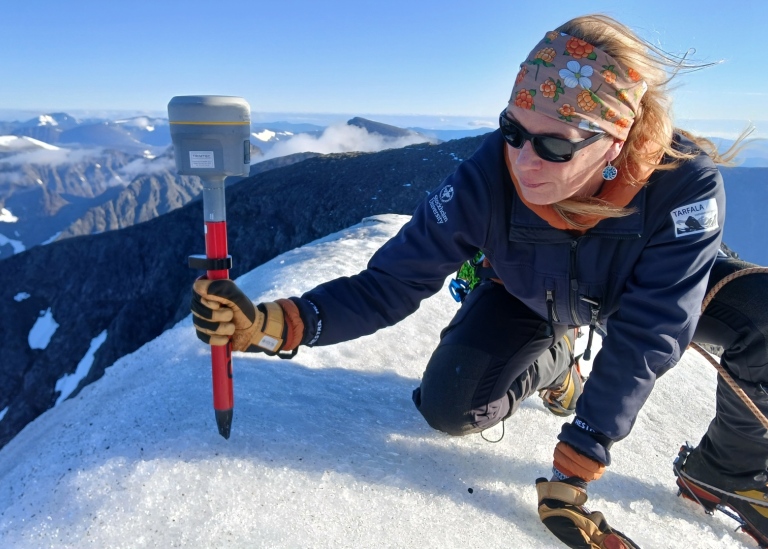
The southern peak of Kebnekaise, Sweden´s highest mountain, is covered by a small icefield whose height varies with snow accumulation during the winter and melting during the summer. The annual measurements are conducted by the researchers at the Stockholm University Tarfala Research Station at the end of summer, in order to capture the lowest elevation of the southern peak before the snow begins to fall again.
The altitude is determined by so-called differential GPS measurement. This year, it was measured at 2088.4 metres above sea level. This comes after another negative measurement: in 2024, which was a record-warm year, Kebnekaise's southern peak melted by 3.1 metres.
Last year, not only did the southern peak decrease significantly, but so did also Storglaciären (the Large Glacier), which is located right next to Tarfala Research Station. Never in the past 80 years has the mass loss on Storglaciären been as great as in 2024. But this year, during the current summer season, we saw no signs that Storglaciären was heading for another record low, and therefore we hoped that the melt on the southern peak would also be lower than in 2024," says Nina Kirchner, professor of glaciology and director of Tarfala Research Station.
Another year in with negative glacier’s balance
The mass balance for Sweden's reference glaciers is also measured at the end of the summer. Nina Kirchner compares it to a financial statement: "while we expect the mass balance for Storglaciären to show smaller losses than in 2024, it will still be another year in which the glacier’s balance is negative”, explains the researcher.
The mass balance of Storglaciären – continuously measured for 80 years – is the longest detailed mass balance series in the world.
At Tarfala Research Station, "turning" 80 this year, research on glaciers is conducted within the framework of national and international projects. At the station, equipment is also tested for polar expeditions and teaching students in various subjects.
The year 2025 has been designated by the United Nations as the International Year of Glaciers´ Preservation.
Latest Highlights:
A sustainable diet also helps us age well, UAM study reveals
From the frontlines to the classroom: War correspondent joins UB faculty to teach new course
UAM opens doors to science for teens at First International Youth Campus
Upgraded solar telescope brings scientists closer to predicting solar flares
